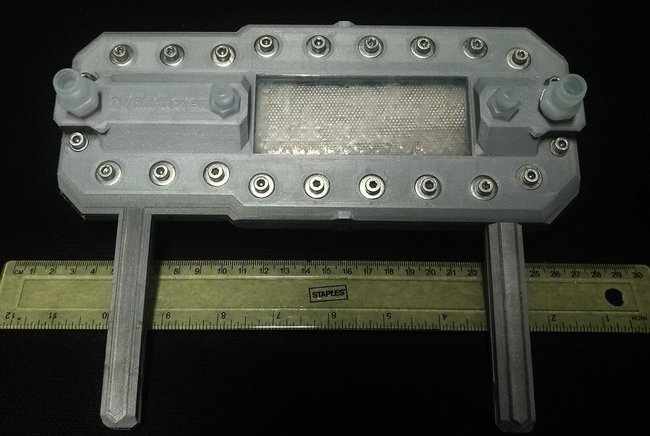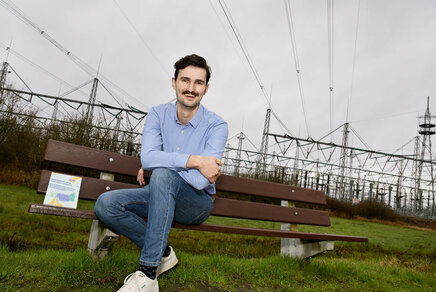Affordable and productive electrolysis from the 3D printer
Researchers can test their electrolyzer theories faster with an easily 3D-printed model, accelerating research into electrolyzers.

Stephane Weusten defended his PhD on how to build an inexpensive and effective electrolyzer using a 3D printer. He easily adjusted geometrical parameters to improve the performance of the device. This accelerates research into the generation of cheaper and more efficient hydrogen.
Electrolyzers are likely to play an important role in the energy transition. The devices split water molecules into hydrogen and oxygen using electricity. But the extent to which oil and gas are replaced by hydrogen does depend on the performance of electrolyzers. Hydrogen is a lot more expensive compared to fossil fuels. And although electrolyzers have been around for about a hundred years, they haven't changed much in that period. "You can't look inside the device itself, which makes it hard to figure out what's going on," says Stephane Weusten.
Scientific calculations and simulations help to learn more about the device. But how does the theory work in practice? And how do you improve the performance of electrolyzers to ensure that hydrogen actually becomes a formidable competitor to oil and gas? To find out, Stephane Weusten used a 3D printer. "Normally, you spend about 3,000 euros to try out a limited set. The test material is expensive because it has to be custom made. And it also takes a long time."
Roll of plastic
With the 3D printer, that is a thing of the past. "You buy a roll of plastic and with five euros you are done and you have a complete electrolyzer." Not that a well-functioning device rolled out of the printer overnight. How many different versions he made, the researcher can't remember off the top of his head. "Per improvement, we were soon six versions away. At some point you lose count." He chuckles. "It sometimes drove my girlfriend crazy when I had to 3D print something in our bedroom because it makes quite a bit of noise."
Higher reaction speed
"It was hard work and toil every day, eliminating problems step by step." To avoid leaking was complicated. "Sometimes it fell apart." But step by step, Stephane Weusten did manage to improve performance by adjusting the geometry of the electrolyzer. For example, the researcher changed the shape of the inlet so that the molecules collided faster and the higher reaction rate produced more hydrogen in a shorter time. He also modified the 3D electrodes. In total, all the modifications resulted in a seven times higher reaction rate.
Faster testing
"Of course I am happy with that, but the gain is mainly in the 3D printing," the researcher thinks. "Previously, we used almost no 3D printer to build electrolyzers. Now other researchers can also work with these and test their theories faster. That's how you accelerate research into electrolyzers and hydrogen, and that's really the added value of my work."
Stephane Weusten defended his thesis on April 1 entitled: Demystifying mass transfer in electrolysis through 3D printed reactors. Supervisors: prof.dr. F. Gallucci, prof.dr. J. van der Schaaf and dr. M.T. de Groot
Keep following us
Latest news


![[Translate to English:] [Translate to English:]](https://assets.w3.tue.nl/w/fileadmin/_processed_/e/0/csm_BvOF%202019_1031_BHF%20license%20TUe%20ILI%20copy_8a50884392.jpg)
More on Sustainability


